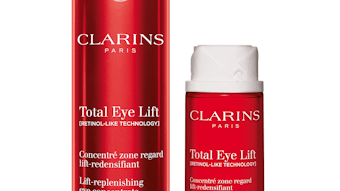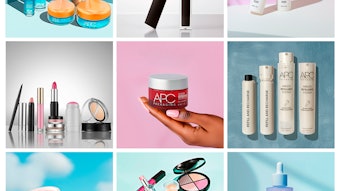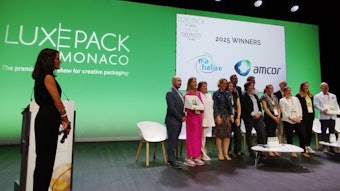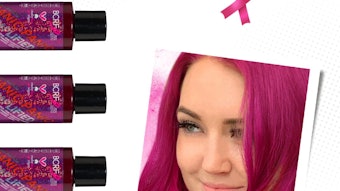Tubes are hot. The European Tube Manufacturers Association (ETMA) reports output from the European tube industry will likely reach 10 billion tubes once final 2006 numbers have been tallied. According to an association press release, “This breathtaking success can be attributed to the clear advantages consumers derive from these containers. European tube manufacturers have recently launched several new applications and innovations.”
While this growth may be largely attributed to one or two specific global tube manufacturers and generated by production in India and Asia—the number is still staggering. Consider that the current world population, at the time of publication of this article, is nearly seven billion. The cosmetics and personal care industry is the largest buyer of tubes by ETMA’s numbers, accounting for 42% of overall sales. Therefore, it may stand to reason that there is personal care product in a tube in every home around the globe.
ETMA’s bold statement lends credence to the benefits of tube packaging. Convenient for a variety of products, no matter the application, tubes offer optimal protection before dispensing and allow product to be portioned out as desired.
On top of their practicality, tubes have become upscale in appearance. Aluminum overshells, custom tube shells, elaborate cap options and other aesthetic enhancements allow tubes to self-advertise on shelf space ordinarily reserved for luxury products. It is no longer enough to simply dispense when squeezed, or for a twist mechanism to raise lipstick—product packaging is now expected to enhance the lifestyle being sold, as well as the product within.
Conversations with Suppliers and Manufacturers
When speaking with tube suppliers and equipment manufacturers, flexibility and the ability to create high-end packaging are common themes. Flexibility cannot be limited to or defined by one single aspect; businesses must offer multiple sizes and decorating options, speed to market, dispensing and cap options and creative packaging that truly reflects a brand, thereby creating techniques that secure the future of tubes as a preferred package for personal care and cosmetic products.
It begins with understanding customer needs and working closely with them to ensure ideas and expectations for a package are realistic and goals are achievable.
“Usually, Seidel works in close cooperation with cosmetics companies,” says Frank Beinborn, manager of marketing for Seidel GmbH + Co. “Of course, the earlier our engineers join the conception of a new product packaging, the more chance they have to bring in their own expertise. Often, customers ask (about) the feasibility of their new packaging ideas, which our engineers can check quickly. In this stage of the development process, they develop alternative solutions (if) they find out that an idea can not be produced as originally planned.”
“I think, as a company, you have to be flexible,” says Tristan Wallack, after sales and marketing manager, Norden Machinery AB, a division of the Sirius Machinery Group. “There are quite a few competitors out there that simply are not flexible. They will turn down projects if it means they would have to take the time to design a solution. But I think what makes us special is that we don’t just react to the trends. We help create trends. If you want to stay ahead you need to come up with new concepts that customers will be interested in and are beneficial to the tube filling process.”
A trend, in fact, is a concept that reverberates through conversations with tube suppliers as through a vast auditorium. Not simply following trends, but pushing, facilitating and creating them, looking strategically at processes and markets and forging new methods to generate rewards for both supplier and customer. World Wide Packaging, for example, has evaluated how and where tubes are being manufactured, and the company’s reaction to the results has proved to be a boon.
“World Wide is a different business model than most tube manufacturers,” says Jeffrey Hayet, vice president for global sales, World Wide Packaging. “Ninety percent of everything we are producing for multinationals is custom—custom tube heads and closures. So, we attacked the market in a way that it’s never been attacked before. It’s been very, very successful. In 2006, when most manufacturers were flat in sales, our business, tube-specific, grew 300%. We’re projecting 2007 growth to be in excess of 300% again.”
The business model, embracing the trend for alternative manufacturing locations and models, and its subsequent success, has, in turn, translated to cost savings for World Wide’s customers.
“In the States, if you build a custom tube or closure, the mold cost could exceed a million dollars, and add to the top of that (the cost of) huge, necessary machine modification,” says Hayet. “And the speed to market is probably nine months on molds. We’re building molds in 45 days, and at costs of only $10,000—$20,000 dollars per mold. And our qualities (good manufacturing processes and standard operating procedures) are up to U.S. standards—in Asia.”
The company has also developed proprietary technologies to address issues such as speed to market. Its in-line process has eliminated cap lead time (Hayet: “We’re not waiting for a cap to arrive in the building to finish a tube.”), eliminated loose cap problems and created a 100% guarantee of print registration, allowing the cap to register to the print copy so the thumb release always aligns with the front panel of the tube.
“The challenge on a one-piece tube is that the body’s extruded and the cap portion is injection-molded. Where (World Wide’s) patents lie is (in) our ability to fuse the tube sleeve to the cap,” says Hayet. “The second advantage is that we have the ability to print over the tube’s shoulder. In the tube industry, you usually have a 1/32-inch gap between the tube sleeve and the head. We can offset print that whole area.”
The devil is certainly in the details when positioning products for the beauty industry. Every inch of real estate on a tube sends a message about the brand and the product, and every aspect of a tube is an opportunity to set the product apart.
“From our point of view, the lids and closures can make a (great) difference,” says Beinborn. “Metal parts can be decorated in many different ways. For example, logos or other inscriptions can be (added) by pad printing, silk screening, hot stamping or even laser-engraving. Surfaces can be anodized in various matte or shiny colors and, additionally, be brushed or polished. We invest in research and development as well as in modern production facilities to offer innovative surfaces to our customers.” (See Upscale and High-tech in this feature for Seidel’s examples.)
Norden Machinery cites the importance of the shape of a tube’s seal. The company’s Design-A-Seal and Scoop seal provide visual and tactile enhancements that reinforce brands and set them apart on shelves.
Wallack notes that a move toward larger, more technically advanced tubes is among recent trends—again, fostered by advancements in packaging engineering and equipment.
“Traditionally, the largest tube that a tube filler would run is 50 mm (in diameter),” says Wallack. “We now offer upgrades that can run up to 60 mm. Companies like large tubes because they can put high fill volumes in them and replace bottles and containers as packages.”
Tube fillers and suppliers also are well aware of product trends, and are active in positioning tubes as the packaging of choice in emerging category segments.
“I would say the newest trend in plastic tubes,” continues Wallack, “is what’s called ‘tube-in-tube.’ It’s where a whole tube is built inside another tube. The benefit is separating two products in one tube so they won’t interact until they are squeezed out of the tube. It took awhile to figure out how to fill and seal this application, (but) it’s now offered for new and existing machines.”
Hayet emphasizes antiaging as a segment that depends on the technical strides made in tubes manufacture. “We’re doing a huge amount of business in the facial market place. We’re doing a global launch for a U.S.-based company, for face, that has a fitment in the tube head made of silicone and a valve built into the head so when you squeeze the tube, the valve opens up to let the product flow and when you stop squeezing, it shuts down. We’re introducing a huge amount of technology in the dispensing of products for facial applications.”
“There are always going to be advancements and changes in our industry,” notes Wallack. “Our company takes a lot of pride in finding solutions to new challenges.”
“In the tube world, there is a lot of competition,” adds Hayet, who goes on to champion World Wide Packaging’s willingness to fund programs that advance tube packaging and its ability to expedite speed to market, putting the company in a very strong position. “In our case, (growth is due to) the overwhelming response to the uniqueness of the package based on capacity and volume. It’s multiplied and multiplied and multiplied.”
See the online exclusive Tubos ex Machina for more insight on tube-filling machinery from Tristan Wallack, after sales and marketing manager, Norden Machinery AB, a division of the Sirius Machinery Group.









